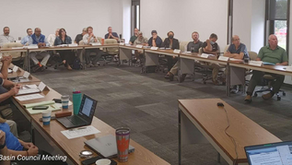Fabulous Facilitation: Control the Tempo, Control the Ebb and Flow
- JD Solomon
- Feb 11, 2022
- 3 min read

We had met at the same place, at the same time, and in the same format every month for the past six months. The team still had eight months to go to complete the master plan. For the past three months, half of the sessions included breakout groups where participants worked together to develop key aspects of the final document. Everything was being performed just like everyone had agreed in the project charter. However, the burnout could be seen in their eyes and heard in their voices…
A seasoned team had designed a week to do Failure Modes and Effects Analysis (FMEA). We would spend a slow-paced Monday afternoon working through the plant overview and a low-intensity Friday morning reviewing what we had done over the week. Everyone was committed to an intense, action-packed middle three days where we would get most of the heavy lifting done. However, by mid-morning Thursday, it was apparent that interest was fading fast…
Control the Tempo, Control the Ebb and Flow
Whether a single session or multiple sessions, “ups” and “downs” will occur during the facilitation process. Like many things in business and life, the lowest points are followed by the highest points. Experienced facilitators understand this. Great facilitators look for, and can spot, the subtle changes in tempo and attitudes. All facilitators must master the rhythm and timing associated with group dynamics.
There is a good argument that the ability to 'pivot' or 'adjust on the fly is a natural ability rather than a learned skill. Natural ability is very helpful. However, the natural ability to pivot is neither necessary nor sufficient for being a solid facilitator.
Advance preparation is an essential for success. Like anticipating disruptions from participants, accepting that low and high points will occur in the facilitation process, and having a backup plan, is a big part of the solution.
Several options as part of backup planning for the lows and highs associated with the facilitation process include:
Dismiss Early – do not force the team into an unproductive zone
Backup Exercises – dig into the facilitation tool bag for alternative methods
Break into Small Groups – when all else seems to fail, break into small groups, and let participants talk more closely to each other
Multiple Facilitators – swallow pride, bring in someone else to assist, show a fresh style
Reference the charter – remind everyone to focus on the expectations established at the beginning
Maintain Steady Tones – Every session should end with a balanced approach on what is going well and what needs to be improved in the process.
What to Do
Develop a charter that includes a reasonable schedule, objectives, and process
Have all participants sign the charter
Develop a list of risks that you anticipate based on your experience and the pre-session exchanges
Develop a mitigation strategy (backup plan) for each risk
Begin each facilitated session with a realistic summary of where the team is and where it is going
End each facilitated session with a balanced summary of the pluses and minuses of the process
Have between-session conversations with at least 10 to 15 percent of the participants
Do not be afraid to pivot from the original plan or process
Real-World Solutions
In the master plan example, I chose a different location for the next session and changed the format. I also used the first hour to do a mid-year review of the charter, including the project frame and our objectives. This next meeting would later be regarded as the high part of the multi-session process while the preceding meeting would be remembered as the low point. The overall master planning process was considered a remarkable success.
In the FMEA example, we stopped the normal schedule that Thursday morning and simply walked the plant together. When we came back after lunch, the team reached a consensus that we needed to extend the process to a second week. My first choice was to lengthen the next day (Friday) session, but as the leader, I decided to follow where my team was taking me. I dismissed everyone an hour early, kept to the same schedule on Friday, and we re-assemble for an additional day two weeks later to complete the work. No harm, no foul – everyone was pleased with the final product, they had me back to do more FMEAs, and few participants remember that we pivoted that week.
Managing the Highs and the Lows
Most facilitated sessions will have highs and lows. It is best to assume these highs and lows will occur whether it is a daily, weekly, or monthly event. The key to managing the tempo, to controlling the ebb and the flow, is to be prepared. Emphatic listening has a significant role too.
JD Solomon Inc provides facilitation at the nexus of facilities, infrastructure, and the environment. Contact us for more information about facilitation services ranging from Strategic Plans and Board Retreats to Criticality Analysis, Root Cause Analysis, and Capital Program Development.




Kommentare